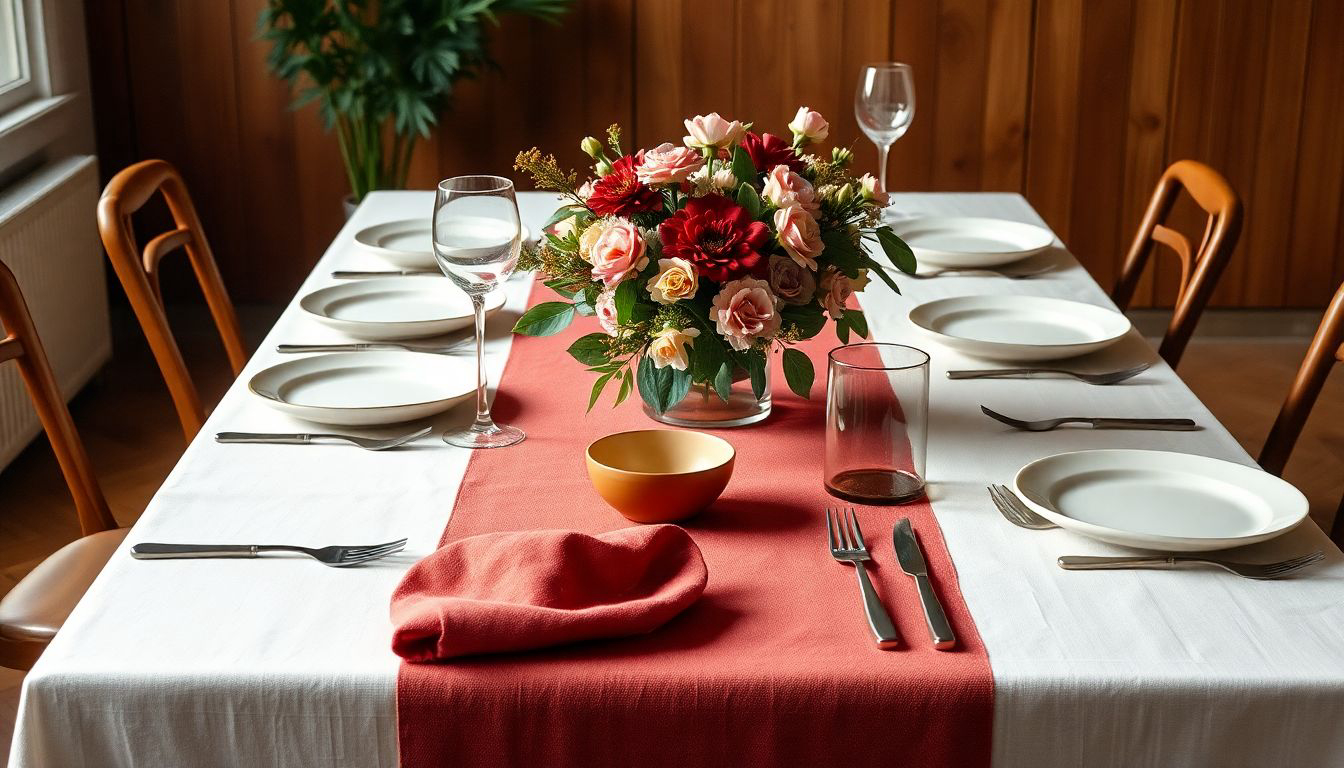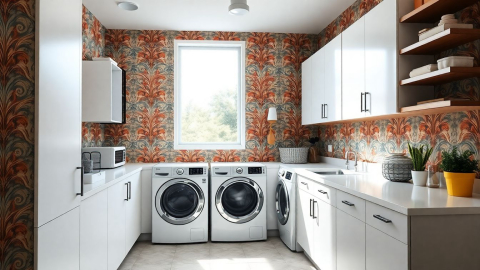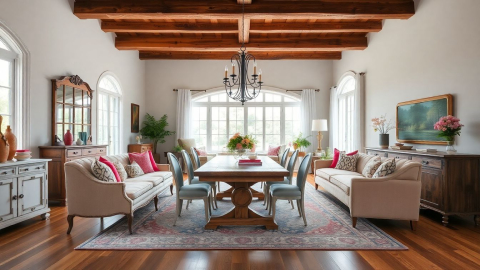Elevating Your Dining Experience: The Art of Table Decoration

Setting the perfect table can transform even simple take-out into a Michelin-starred experience, according to Julia Paino from Galavante. This sentiment captures the essence of table decoration - an art form that goes beyond mere aesthetics to create memorable dining experiences. As we delve into the world of table decor, we'll explore how thoughtful arrangements can elevate everyday meals and special occasions alike, blending timeless elegance with contemporary trends.
The Foundation of a Beautiful Table
At the heart of any well-decorated table lies the foundation - the tablecloth or runner. Francesca Hadland, interiors expert for Bridgman, advises, "Look to Scandinavian-inspired styles for a mindful, minimalist dining scheme. Choose linen tablecloths and napkins, cutlery in classic styles and simple crockery while keeping to a colour scheme of just one or two main shades that imbue your space with warmth – whether that's a rust red or forest green." This approach not only sets the tone for the entire table but also provides a canvas for the rest of your decor elements.
The choice of tableware plays a crucial role in creating the desired ambiance. Paino suggests, "A good rule of thumb is to have a plate for each course." This allows for a seamless dining experience while also contributing to the overall aesthetic. For those looking to add a touch of sophistication, consider incorporating charger plates. These decorative base plates serve as anchors for your place settings, adding depth and visual interest to your table.
When it comes to cutlery and glassware, balance is key. Arrange utensils from the outside in, corresponding to the order of courses. For a formal setting, Paino recommends including "salad forks, dinner forks, knives, soup spoons, butter knives, dessert spoons, water glasses, red wine glasses, and white wine glasses." However, for everyday meals, a more simplified arrangement can still be elegant and functional.
Embracing Seasonal and Thematic Elements
One of the joys of table decoration is the ability to reflect the changing seasons and celebrate special occasions. Seasonal place settings offer an opportunity to infuse your table with color and texture. As noted in the Galavante article, "Adding an elaborately folded napkin with a traditional napkin ring is a good idea. Napkin rings are like jewelry for tables." This simple addition can dramatically alter the feel of your table, allowing you to transition seamlessly from a casual summer brunch to a formal winter dinner.
Incorporating natural elements is another way to bring seasonality to your table. Fresh flowers or plants add life and vibrancy to any setting. However, for those who travel frequently or prefer low-maintenance options, Rohan Vasa suggests considering artificial alternatives. "I have a paper geranium on my coffee table that adds some visible life to a space and also serves as an art piece. When I want fresh flowers, I simply move it somewhere else for a while. This is a great way to always have something 'living' in your home," Vasa explains.
Thematic decorations can also play a significant role in creating memorable table settings. Whether it's a holiday-inspired centerpiece or a color scheme that reflects a particular mood or occasion, these elements help tell a story and engage your guests. The key is to strike a balance between thematic elements and the overall aesthetic of your dining space.
The Art of Layering and Texture
Creating depth and visual interest on your table often comes down to the art of layering. Ami McKay, creator of PURE Design, advises, "My best advice for styling your coffee table is to find a couple of items that you love and vary the scale of these pieces in size and height for balance." While this advice is specifically for coffee tables, the principle applies equally to dining tables.
Start with your base layer - the tablecloth or placemats. Build upon this with plates, chargers, and napkins, each layer adding texture and dimension. Incorporate elements of different heights, such as candles, floral arrangements, or decorative objects, to create a dynamic visual landscape. Remember, the goal is to create a cohesive look that's pleasing to the eye without overwhelming the space.
Texture plays a crucial role in adding depth to your table setting. Mix materials like wood, metal, glass, and textiles to create a rich, tactile experience. As Jamie Young, founder of Jamie Young Co., suggests, "You can mix and match different textures to add depth and tactile appeal while combining items like a wooden bowl, metallic vases, and marble boxes for a tactile and visually interesting composition."
Personalizing Your Table
While following design principles and trends can guide your table decoration, the most memorable settings are those that reflect your personal style and experiences. Jenon Bailie, merchandising and design director for Room & Board, notes, "When you decorate a coffee table, you're putting items on display that say something about you." This philosophy extends beautifully to dining tables as well.
Consider incorporating items that hold sentimental value or tell a story. This could be souvenirs from your travels, family heirlooms, or pieces that showcase your hobbies and interests. Rohan Vasa shares, "I am always collecting when traveling and looking to bring something home. Usually this item will live on my coffee table as a focal point for a while (at least until the next treasure arrives)." These personal touches not only make your table unique but also serve as great conversation starters.
Don't be afraid to mix and match styles and periods. A contemporary table setting can be beautifully accented with vintage pieces, creating a look that's both timeless and personal. The key is to create a cohesive overall aesthetic that reflects your taste and complements your home's decor.
Conclusion
The art of table decoration is a beautiful blend of functionality and aesthetics, tradition and personal expression. By thoughtfully considering each element - from the foundation of your tablecloth to the finishing touches of personal mementos - you can create a dining experience that delights the senses and nourishes the soul.
As we've explored, the key to successful table decoration lies in balancing various elements: color and texture, height and depth, seasonal themes and timeless pieces. Whether you're setting the table for a casual family dinner or a formal gathering, remember that the goal is to create an inviting space that enhances the joy of sharing a meal with others.
In the words of Julia Paino, "Every occasion you share a meal is special." By approaching table decoration with creativity and care, you transform each meal into a memorable experience, celebrating the art of dining in its fullest sense.
References
"Setting the Perfect Table" by Julia Paino (Galavante) - https://galavante.com/style/style-style/setting-the-perfect-table/
"Floating Candle Summer Tablescape" by Jen (Tater Tots and Jello) - https://tatertotsandjello.com/floating-candle-summer-tablescape/
"5 Dining Room Trends That Will Be Huge In 2024" (House Beautiful) - https://www.housebeautiful.com/uk/decorate/dining-area/a42328973/dining-room-trends/
"18 Beautiful Ways to Decorate a Coffee Table, According to Designers" by Aly Walansky (Martha Stewart) - https://www.marthastewart.com/coffee-table-decor-ideas-8363747
"The Art of the Table: A Critique on Modern Tablescapes and a Nod to Timeless Elegance" by Paul Ishwood (Tat London) - https://www.tat-london.co.uk/post/the-art-of-the-table-a-critique-on-modern-tablescapes-and-a-nod-to-timeless-elegance
More Articles

Moroccan Interior Design: A Satirical Journey Through the Land of Poufs and Patterns

American Colonial Architecture: A Satirical Stroll Through History's Architectural Attic

The Haunting Allure of Gothic Architecture: A Journey Through Time and Aesthetics

Exploring Interior Design Salaries: Trends, Factors, and Career Prospects

Transforming Your Laundry Room: Design Ideas for Style and Functionality
